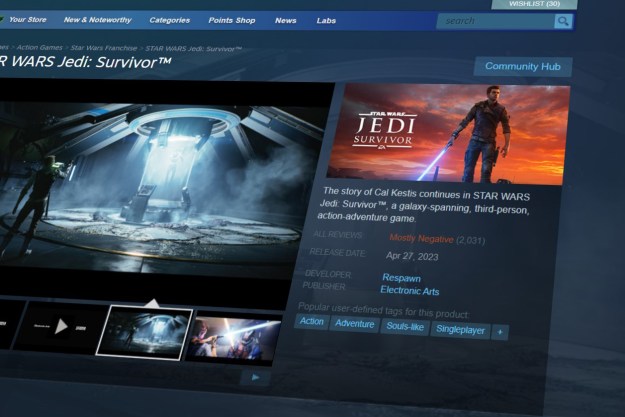I don’t boot up my Meta Quest 2 nearly as much as I should. That was apparent to me last year when I kept putting off Demeo. I’d heard nothing but glowing praise for the multiplayer dungeon crawler, which won numerous VR awards in 2021, but it repeatedly slipped my mind when looking for new games to try. Perhaps that was because I knew I’d have no one to play it with since so few of my friends are VR adopters yet.
Luckily, I’m about to run out of excuses. Demeo: PC Edition is set to launch on April 7, bringing VR’s best kept secret to anyone with a PC. I played a build of the game during GDC and it was the exact kick in the pants I needed to take it off my wish list and get it into my cart. The card-based tactics game is a perfect fit for mouse and keyboard without fully sacrificing the tactile element that made it a standout in VR.
Roll the dice
For the uninitiated, Demeo is a dungeon crawler laid out like a board game. Up to four players form an adventuring crew and place their figures on a board. Each player gets two actions, which they can use to move through the dungeon or play cards from their hand. The ultimate goal is to find a key on each level and the exit it unlocks. Think Diablo meets Slay the Spire.
Like any good dungeon crawler, there’s a load of enemies and piles of loot to get through between points A and B. Each character class has its own set of cards, which range from healing flasks to special attacks. In my party, I took the role of a ranger who could pepper enemies with arrows from afar. My basic attack card did a little bit of damage, though other cards would let me hit an enemy with a poison arrow or summon an ice elemental.

It plays out like a regular grid-based tactics game where players trade turns, via initiative order, as they move throughout the dungeon. That creates a perfect pace and flow for a multiplayer game. Rather than everyone talking over each other during hectic action, the turn-based nature of Demeo meant that my crew and I could carefully talk through turns between actions. If I damaged this one rat, my teammate could get up behind it and finish it off with a backstab next turn. It’s the kind of experience that brought me back to the days of LAN parties where my friends and I would link our computers together to play and chat.
The VR version of Demeo is notable for its tactile component. When you’re playing in a headset, you can physically pick up your piece or toss the dice with the flick of a motion controller. With a straight PC port, there’s a danger of losing that board game charm, stripping the game down to a standard tactics game. Fortunately, that’s not the case. Even without physical motion, everything still feels satisfyingly tactile in the PC edition. Tossing a die with a mouse flick still feels like rolling, as does slinging an attack card onto the field. Had you not told me it was a VR game first, I wouldn’t have detected that from the smoothly implemented PC version.

What’s most exciting is the potential player base expansion. Demeo: PC Edition will support cross-play between PC and VR (as well as cross-progression), greatly widening its audience. As I was playing, I was making a mental list of friends I could get to play it with me now that it would be easily available. In a somewhat backward way, my demo convinced me to finally check out the VR version. That’s still how I want to play it ultimately, and now I can without fear that I won’t have any other VR adopters to party up with.
Considering that developer Resolution Games has been pumping out content for the game since its original launch, Demeo: PC Edition is much better positioned now than it was last May. There’s a sense that the developers are in it for the long-haul, ready to churn out expansions that’ll keep its lifespan up. And, perhaps most importantly, a move to PC opens the door for a dedicated modding scene to emerge. While VR is what made the game stand out initially, it feels like its real lifespan is about to begin.
Demeo: PC Edition launches on April 7.
Editors' Recommendations
- One of the best Tomb Raider games is coming to Xbox Game Pass
- Horizon Forbidden West is a marvel — if your PC can handle the heat
- PS5’s new Digital Edition brings console gaming one step closer to PC
- One of Game Pass’ best titles leaves PC on August 15 and you don’t want to miss it
- I can rest — my search for the ultimate PC gaming controller is over




